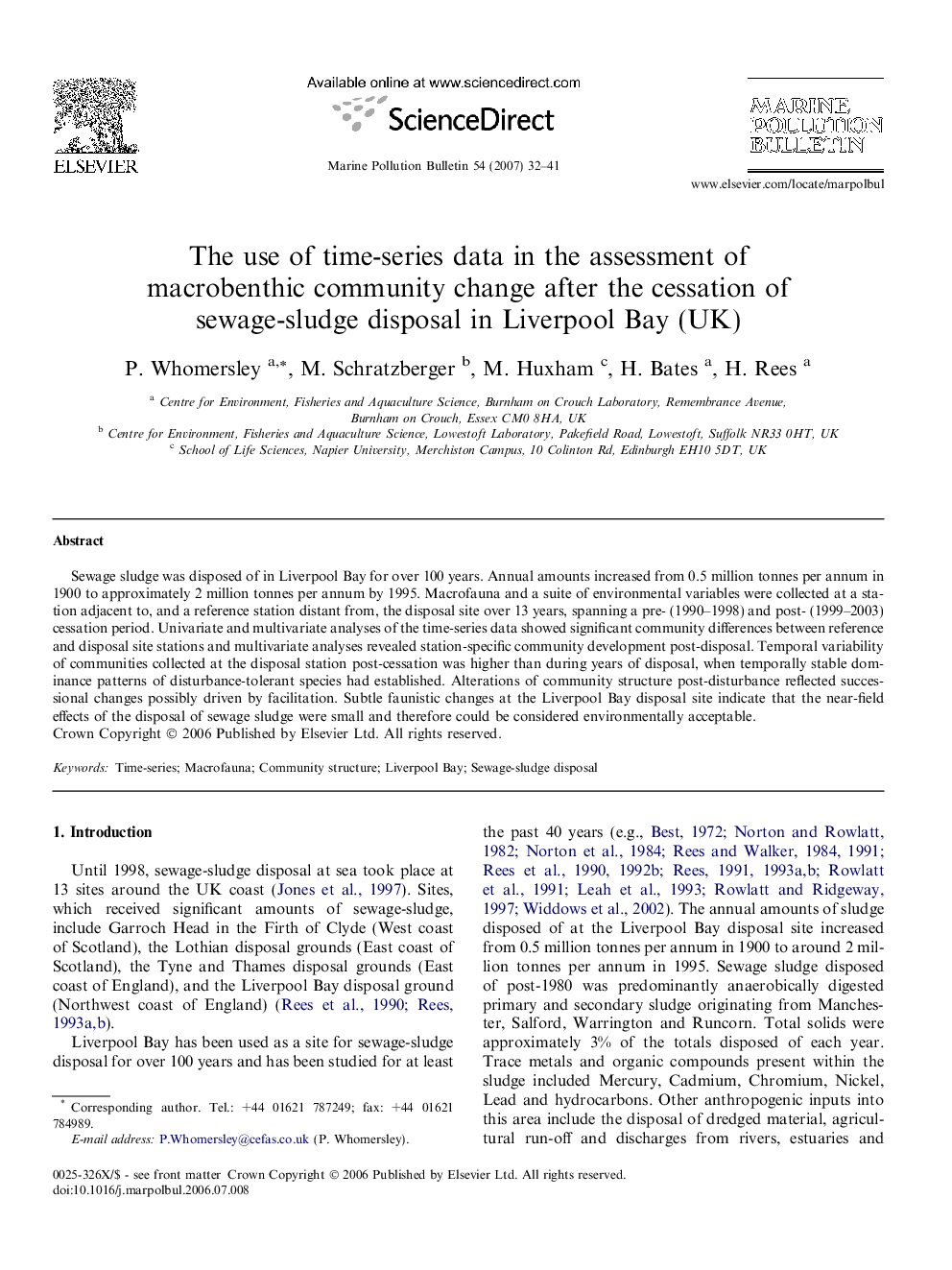| Article ID | Journal | Published Year | Pages | File Type |
|---|---|---|---|---|
| 4477641 | Marine Pollution Bulletin | 2007 | 10 Pages |
Sewage sludge was disposed of in Liverpool Bay for over 100 years. Annual amounts increased from 0.5 million tonnes per annum in 1900 to approximately 2 million tonnes per annum by 1995. Macrofauna and a suite of environmental variables were collected at a station adjacent to, and a reference station distant from, the disposal site over 13 years, spanning a pre- (1990–1998) and post- (1999–2003) cessation period. Univariate and multivariate analyses of the time-series data showed significant community differences between reference and disposal site stations and multivariate analyses revealed station-specific community development post-disposal. Temporal variability of communities collected at the disposal station post-cessation was higher than during years of disposal, when temporally stable dominance patterns of disturbance-tolerant species had established. Alterations of community structure post-disturbance reflected successional changes possibly driven by facilitation. Subtle faunistic changes at the Liverpool Bay disposal site indicate that the near-field effects of the disposal of sewage sludge were small and therefore could be considered environmentally acceptable.
